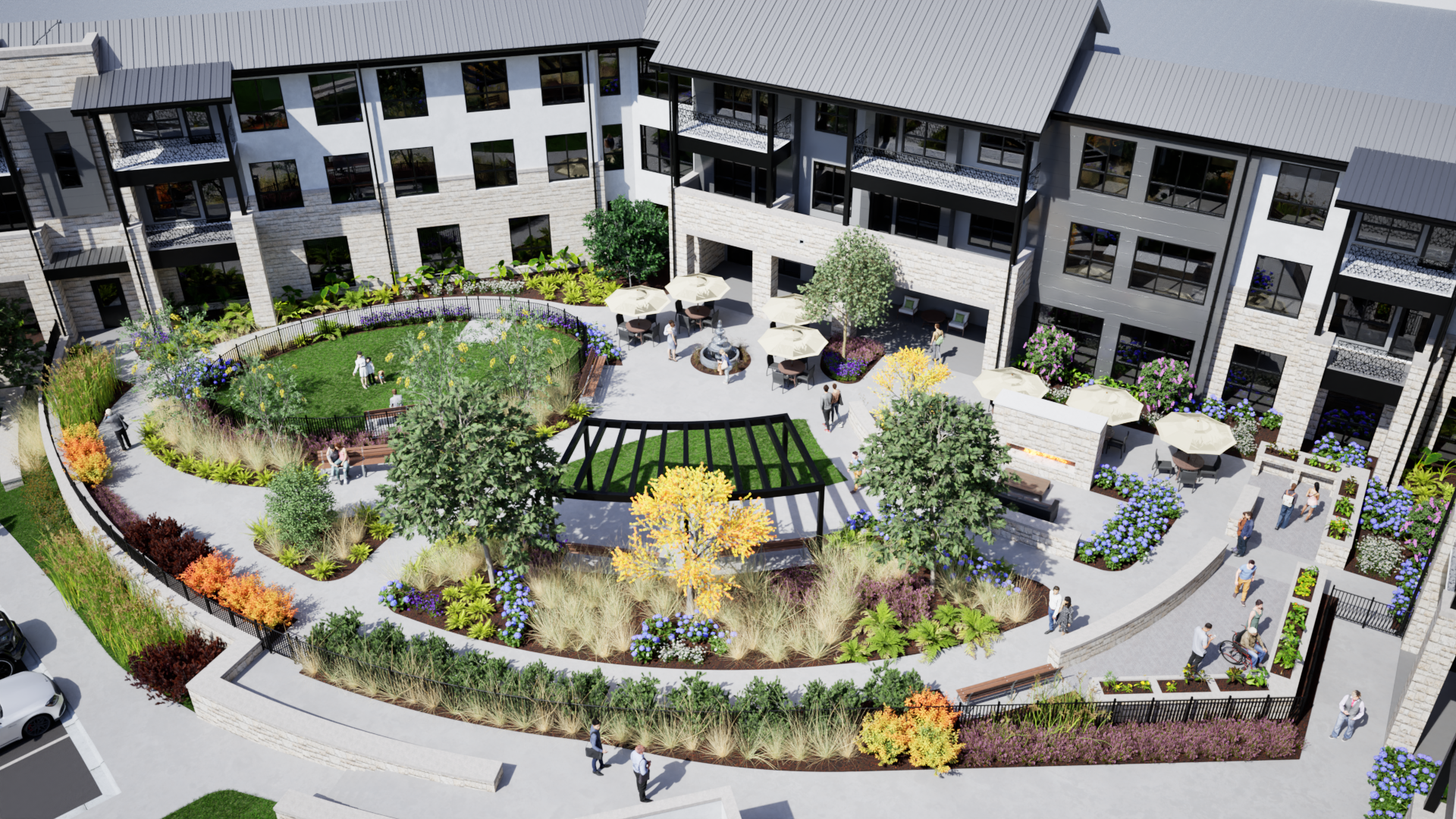Pi Looks Ahead: What's in the Future?
As the winter holidays are now in full swing, we can all give thanks to and for each other for working together to meet all the challenges that 2021 brought us. Thank you! It is great to be thinking about a new year and what innovative and exciting things await us!
We asked several of our colleagues and friends to share their thoughts about what the new year might bring, and the responses point to a time of unprecedented change, innovation, and the further evolution of our industry. (Click here to read their insights.).
At Pi, the leadership team all agrees we can’t look at our buildings the same way we always have. “While comfort, safety, dignity, and wellness have always been at the core of design, we are now seeing new and engaging opportunities to bring even more social interaction and activity to both residents’ and staff’s lives.” Don’t expect what has been effective in the past to be relevant in the future. Change and innovation are on the agenda, and it is coming fast. “Expect a more diverse resident mix,” said Greg Hunteman, adding, “We’ll need buildings that will cater to a broader group of residents, and we will need spaces that more flexible to meet these varied needs, interests, and activities.”
Expect an increased focus on active adult, wellness and healthcare-related activities and amenities; with senior housing communities becoming a true part of the healthcare continuum.
Having been isolated for the past few years, residents are expressing the desire to be more inclusive in their communities, wanting to create, mentor, teach, volunteer, entertain, and have a voice in community advocacy and policy, activity planning, and even work to some degree. These interests have led to more opportunities for communities to be even more diverse with levels of service and care, as well as being more open to the communities they reside in.
Expect to see the majority of residents falling into two primary categories for senior housing needs. Darren Azdell says, “The current generation is increasingly coming from smaller transitional housing with fewer belongings and a desire for more simplicity and sophistication. There is an emphasis on value as they seek more comfortable, functional, and efficient spaces to live in and more resort style common areas to entertain, socialize and be active in. A second, increasingly smaller group continues to seek larger living spaces so they can keep their belongings with them.” He adds, “But these larger units often yield to residents seeking roommates to both maximize value and add or replace companionship.” In either case, this current generation is value-, technology-, and trend-savvy, having been introduced to multiple home improvement and real estate-based television series for over a decade.
Another trend, suggests Mark Warrick, is the continued growth of affinity-based communities. “We will see more places designed to attract residents who share values and backgrounds. Additionally, we will see more lifestyle-specific communities, such as those that cater to those interested in environmental issues, wellness/fitness, or social awareness. Conversely, many seniors want diversity instead of affinity. They want to interact with people who bring fresh insights, share a variety of experiences, and have the opportunity to interact with others outside of their same age and demographic. This means, says Warrick, more intergenerational and multi-family communities.
With construction and operational costs holding at high levels, expect more repositioning of older assets and innovative strategies to make new and existing buildings more cost- and energy-efficient. Operational costs will begin to drive renovations in addition to maintenance and marketing. Whole building lighting replacements quickly provide returns on investment.
A few other predictions from Greg, Mark, and Darren:
Amenities - As the wave of Baby Boomers hits senior living, they will want more than golf, card games, and poolside barbeques. They’ll expect a quality of life that includes varied dining experiences, entertainment and shopping at their fingertips, the ability to share their homes with pets, cutting-edge wellness and fitness amenities, gardens and greenhouses, and much more. This means a growing trend toward active adult communities, including some with adjacent restaurants, grab-n-go, fitness centers, and continuing education opportunities that are open to the public in some capacity.
Social Opportunities - ‘Try before you buy’ opportunities, where prospects can dine, take a class, enjoy a happy hour, or sample the community life in some other way before they make a long-term commitment. This also creates unique social opportunities in communities.
Workspaces - While common workspaces will be increasingly popular, residents also will want ways to work in their own individual units. This translates to better office spaces and amenities right in their homes.
Intergenerational - More spaces and opportunities for mentorship and teaching. This means flexible, tech-equipped rooms that can be used for meetings, conferences, classes, presentations, and more. This also will present a fresh, innovative way to encourage intergenerational connections and bring residents together with individuals in the community at-large.
Environmentally Sensitive - More attention to green living and energy efficiency. Both owners/operators, residents and now regulators increasingly see the cost-efficiency and environmental benefits solar power, self-sufficiency, and air quality.
Technology Integration - Increasingly, residents are foregoing trips to the movie theater and other entertainment venues and enjoying movies, concerts, and more in the comfort of their homes. Seniors are well equipped with smart TVs, phones, and tablets and increasingly want access to education, entertainment, and memory retention apps and reading. Therefore, instead of an onsite theater, watch for more classroom, activity, and social activity spaces where state-of-the-art media is available for virtual meetings, live stream events, enjoying face-time with family and friends, and more.
Innovative Dining - Residents will demand more and more innovative dining options. This means amenities like food trucks, pop-ups featuring local chefs, pubs, coffee shops, themed communities with wineries/breweries/distilleries, and more. This doesn’t necessarily mean adding square footage. Instead, spaces will need to be more flexible, similar to open planned living rooms. Infrastructure can be shared to reduce costs. For instance, a breakfast café in the morning can easily become a pub in the evenings.
Cost Effective - At a time when buildings/owners/operators are looking to cut costs for new construction or find space for the expansion in existing developments, one target may be parking lots. Consider the possibility of smaller parking lots and garages with ride sharing and even fleets of self-driving cars available from the concierge.
Prioritize Staff - Don’t forget staff. At a time when attracting and keeping good staff is a top priority, buildings with comfortable, tech-equipped breakrooms, access to meals and fitness amenities, and innovative ways to enjoy positive interactions with residents be appealing to many people, especially those for whom work actually is a sanctuary. Consider on-site lodging and living opportunities as benefits to keep long-term valuable employees and their families.
Greg, Mark, Darren, and the rest of the Pi team look forward to 2023 and working with you to create and update communities that attract and keep residents and provide the best possible quality of life for all. Here’s to a happy holiday season and prosperous new year!
Contact us here or call us at 512-231-1910.













